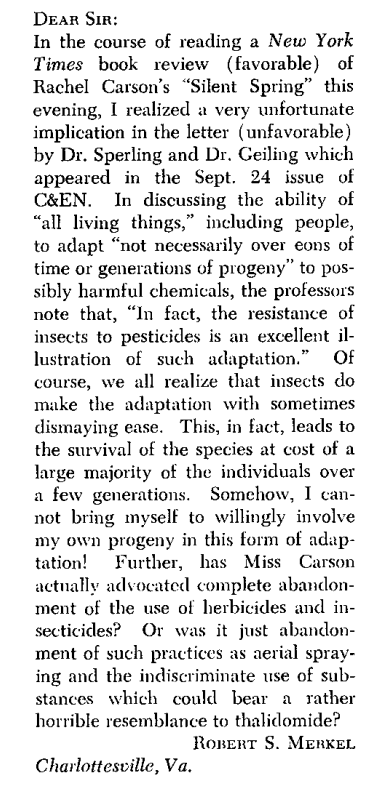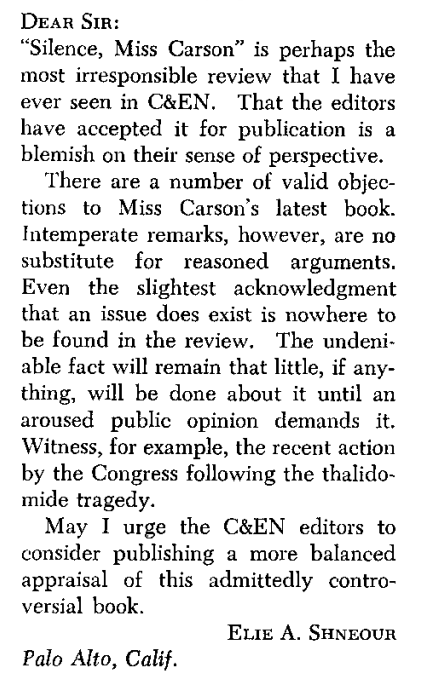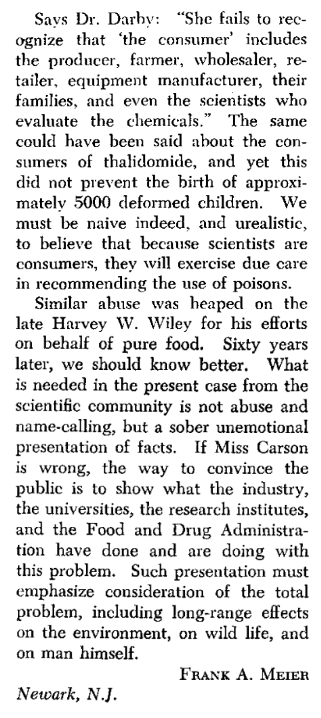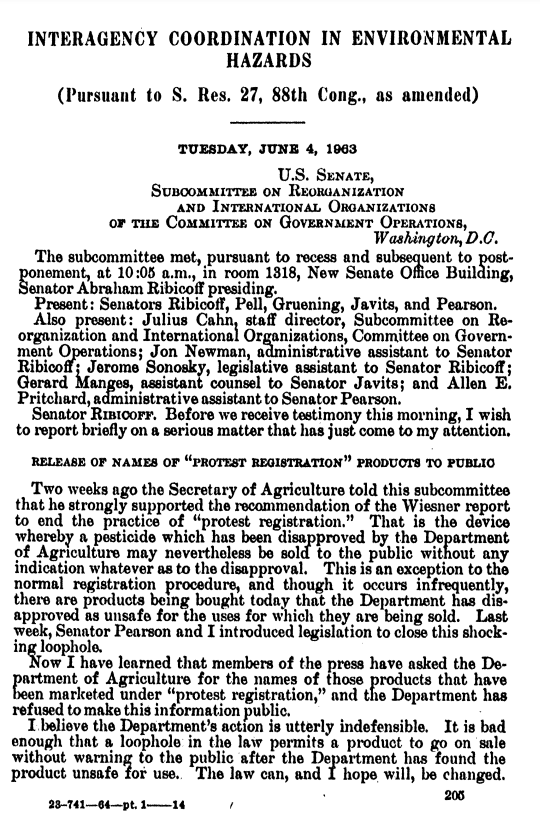Silent Spring sparked debate between the public, chemical industry, federal government, and Carson.
Scientists from the chemical/agricultural industries argued that pesticides were vital for efficient crop production because of increasing population and decreasing land. They also emphasized the role of pesticides in disease control.
Carson countered that, although the benefits of pesticides were well-known, the public knew little about the hazards of pesticides.





